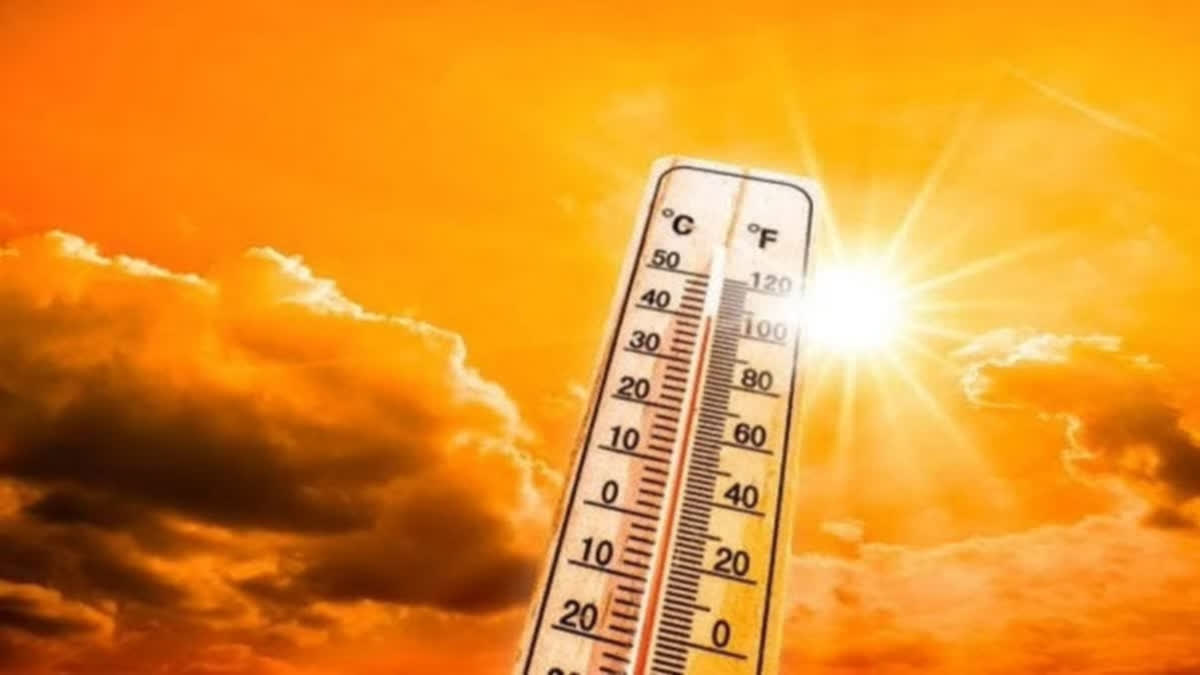Delhi : As several parts of India in May witnessed extreme weather conditions with regards to the record breaking heatwaves being recorded recorded across the country, a new report claims that this increase in temperature is largely due to human-driven climate change.
The Climameter 1.5°C report on heatwaves in India highlights the escalating impact of climate change, particularly on extreme heat events.
"Heatwaves similar to the May 2024 India heatwave are at least 1.5°C warmer than the warmest heatwaves previously observed in the country, even though they occur much later than the southern hemisphere summer seasons", the report said.
Terming it as a largely unique event, the report said that "Human driven climate change and natural climate variability both played a role in increasing the heat during the India May 2024 heatwave." The following are the key findings of the report :
1. Increased Frequency and Intensity: The report shows that India is experiencing a marked increase in the frequency and intensity of heatwaves. Average temperatures in many regions now exceed historical norms more frequently, leading to longer and more severe heatwaves.
2. Regional Disparities: Heatwaves are particularly severe in inland areas and northern parts of India, with the most affected regions including Rajasthan, Andhra Pradesh, and Odisha. These areas now see significantly more days of extreme heat compared to previous decades.
3. Climate Change Attribution: Human-induced climate change has made such extreme heat events 30 times more likely. Rising temperatures are primarily driven by global warming, though local factors like urbanization and deforestation also play a major role.
4. Health and Economic Impacts: The heatwaves are causing substantial health issues, including heat-related illnesses and deaths. They also adversely affect outdoor workers, such as farmers and construction laborers, exacerbating socio-economic vulnerabilities.
5. The report also mentions that climate change has already made heatwaves in South Asia, including India, up to 30 times more likely. These heatwaves could become more intense and frequent as the global average temperature approaches 1.5°C above pre-industrial levels.
This rise in temperature not only poses a grave threat to the environment and the humans but it also impacts the economy, agriculture industry and the labor market.
Extreme heat can severely affect India’s economy, particularly in sectors reliant on outdoor work such as agriculture and construction.
According to a McKinsey report published earlier this year, it highlighted that rising temperatures and humidity will impair labor productivity and increase the economic burden.
Background : From May 26-29 large parts of northern India and southern Pakistan suffered a severe heatwave, with a provisional record temperature of 49.1°C registered in New Delhi.
More than 37 cities in the country recorded temperatures over 45°C. Warnings of heat-related illnesses have been issued, with at least 56 casualties and 25000 suspected heat stroke cases.
"Climate change is projected to alter land conditions, affecting temperature and rainfall in regions, which can enhance winter warming due to decreased snow cover and albedo in boreal regions, while reducing warming during the growing season in tropical areas with increased rainfall", said Climameter report.
"In India specifically, the frequency and duration of heatwaves have increased, associated with Indian Ocean basin-wide warming and frequent El Ninos, leading to severe impacts on agriculture and human discomfort. The combination of global warming and population growth in already-warm cities in regions like India is a major driver for increased heat exposure, with urban heat islands elevating temperatures within cities relative to their surrounding", it adds.
India’s geographical and socio-economic conditions make it highly susceptible to the impacts of climate change.
"Rapid urbanization and inadequate infrastructure amplify the effects of heatwaves, making urban areas like Kolkata and Delhi especially vulnerable", it added.



